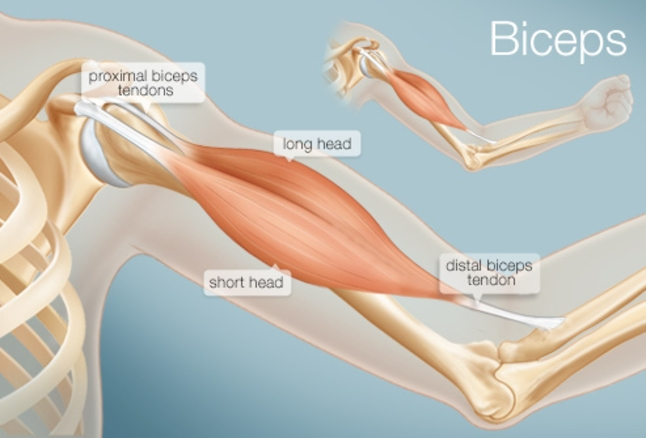What is it?
Your bicep is a muscle at the front of your upper arm. It is made of two parts; the short head is an elbow flexor and the long head turns your lower arm. The Long Head Bicep Tendon/ top of the muscle attaches to the humerus and front of the scapula. It is responsible for a small component of shoulder movement but is main job is for shoulder stability and control.
How does it get injured?
The Long Head Bicep Tendon can be injured from overuse, previous rotator cuff injuries or from trauma, for example landing on an outstretched arm or being blocked when throwing overhead. Overuse injuries can also cause pain or an injury on the tendon.
What does it feel like?
People who experience a traumatic injury often describe an audible pop; sometimes a snapping sensation can occur when lifting the arm out to the side. Pain may get worse during overhead activities and it can be felt at rest and overnight. When a rupture has occurred, there is a visible ‘popeye’ sign. This looks like a lump or bump on your biceps. You may also feel pain around the shoulder joint which could be confused with other structures such as your rotator cuff.
How are they diagnosed?
Your Physiotherapist will use special tests to check if the LHBT is injured, as well as feeling around the front of the shoulder. They will ask you to do certain arm movements and check how strong your arm is. An X-Ray or Ultrasound may be used to confirm the diagnosis if necessary.
What can BIA do to help?
Conservative management is the choice for most LHBT injuries. Your Physiotherapist will normally prescribe a phased strengthening program for you to do at home and do some other therapies during your appointment. If needed, we can refer you to a Specialist for further care or a surgical opinion in rare cases.

